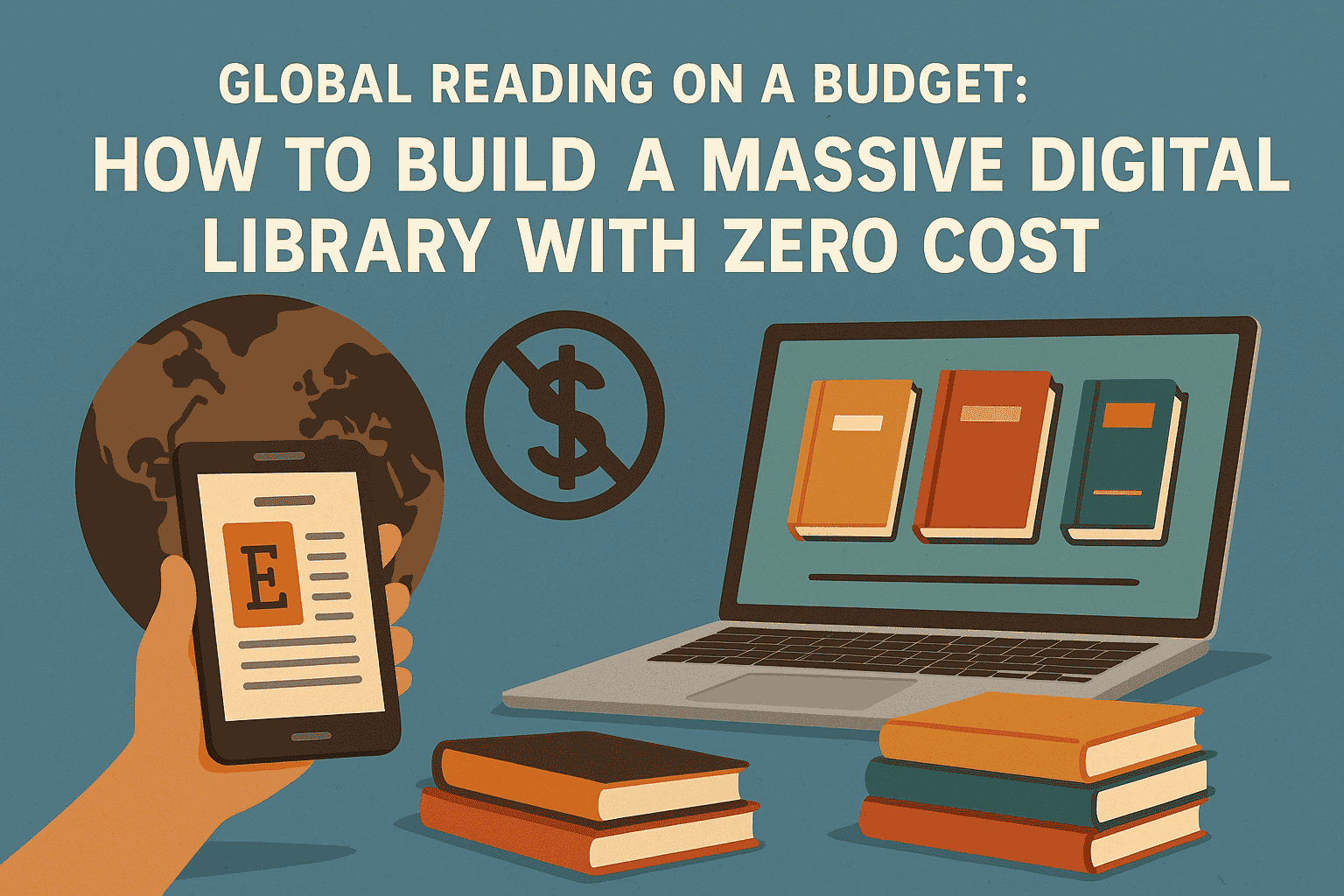What Financial Novels Teach Us About Investment Strategies
Investment strategies are often discussed in terms of percentages, portfolios, and statistical models. But anyone who has spent time in the real world of finance knows that strategies aren’t just about formulas—they’re also about experience, instinct, and human behavior. That’s where financial novels become incredibly valuable. At Junkybooks, we believe literature doesn’t just entertain—it educates, especially when it comes to the subtle art of investing.
While investment guides and market analyses provide the theory, financial novels illustrate how those theories play out in high-stakes scenarios. Whether it’s a trader making a risky bet, a CEO navigating a volatile market, or a retail investor learning from their mistakes, these stories offer valuable insight into the mindset and maneuvering behind smart (and not-so-smart) investment decisions.
In this post, we explore the practical lessons and strategic insights readers can gain from fiction—lessons that are often more relatable, digestible, and, importantly, memorable.
Strategy Beyond the Spreadsheet
One of the most important lessons from financial fiction is that strategy is personal. It doesn’t exist in a vacuum; it’s shaped by risk tolerance, ambition, values, and even emotion. Characters in financial novels often find themselves torn between rational analysis and gut instinct. Through their triumphs and failures, readers are shown how investment strategies need to be flexible, adaptive, and aligned with individual goals.
Take Michael Lewis’s Liar’s Poker, for example. Although autobiographical in tone, the narrative style and character development read like a novel. Readers get a close look at the rise of bond trading and the aggressive culture at Salomon Brothers. But beyond the bravado and chaos, the book teaches a subtle investment lesson: know your edge. Traders who succeeded weren’t always the most educated—they were the ones who understood their advantage and leveraged it ruthlessly.
At Junkybooks, we encourage readers to recognize that sound investment strategy often starts with self-awareness, a theme richly explored in financial fiction.
The Importance of Timing
Timing the market is a notoriously difficult endeavor. But understanding when to act—whether to enter, exit, hold, or pivot—is a recurring theme in financial literature. Novels frequently explore the psychological and economic forces that make timing such a central part of investing.
In Stephen Frey’s The Takeover, timing becomes a make-or-break issue as corporate players navigate the murky waters of mergers and acquisitions. Decisions are rushed, second-guessed, or manipulated—highlighting how market timing isn’t just about numbers, but about reading signals, staying calm under pressure, and knowing when to take a calculated risk.
This fictional approach demystifies timing strategies. It’s not about predicting the exact top or bottom of a market; it’s about understanding context—something novels are exceptionally good at portraying.
Diversification in Character Decisions
Investment professionals preach the power of diversification—the idea that spreading your money across multiple assets reduces risk. Financial novels reflect this concept in how their characters make decisions and build safety nets.
In John Brooks’s Business Adventures, while technically non-fiction, the storytelling tone and narrative structure resemble a novel. The stories within—ranging from market crashes to corporate scandals—show how concentration risk can be devastating. Companies that put all their eggs in one basket (whether through product lines or stock holdings) often suffer the most during downturns.
Novels that center around individual investors often show a similar arc. A character may go all-in on a risky bet, seduced by the promise of high returns, only to face ruin. These cautionary tales underscore the importance of spreading risk—a fundamental principle in smart investing.
At Junkybooks, we believe seeing diversification play out in story form helps readers internalize this concept more powerfully than a graph ever could.
The Dangers of Leverage
Leverage—the use of borrowed money to amplify returns—is a double-edged sword. Financial novels often show both sides of that blade in dramatic fashion.
Frank Partnoy’s F.I.A.S.C.O. pulls back the curtain on the derivatives market in the 1990s. Characters take on huge leverage positions with little understanding of the potential downside. It’s a fast-paced story with real-world lessons: leverage can enhance profits, but it can also destroy careers and firms when the market turns.
Fictional characters often fall into the leverage trap because of overconfidence, greed, or pressure to perform—the same human factors that affect real investors. The takeaway? Leverage is a tool, not a strategy in itself. And using it requires discipline, caution, and a clear exit plan.
Emotional Discipline and Long-Term Thinking
Perhaps the most profound lesson financial novels teach is the importance of emotional discipline. Markets are volatile, and reactions to that volatility often separate good investors from bad ones.
In Robert Harris’s The Fear Index, which blends finance with science fiction, the plot revolves around an AI system that predicts market movements based on fear. As characters react to real-time fluctuations, the novel explores how emotion drives irrational decisions, even among the most sophisticated market participants.
This theme recurs in many financial novels: the investor who panics and sells at a loss, the executive who lets ego guide a billion-dollar move, or the fund manager who breaks the rules for short-term gains. These stories show us that emotional control, patience, and a long-term view are more valuable than any technical indicator.
At Junkybooks, we believe novels illustrate these truths in a way that hits harder than bullet points in a slideshow.
Contrarian Thinking: The Outsider’s Advantage
Great investors are often contrarians—those willing to go against the grain when others are caught in herd mentality. Financial fiction champions this idea by featuring characters who challenge consensus and reap the rewards.
In Michael Lewis’s The Big Short, the main characters spot flaws in the housing market when everyone else is partying on the rooftops. Though technically nonfiction, the book’s storytelling structure mirrors fiction, using vivid characters and dramatic arcs to highlight the rewards of thinking differently.
This contrarian strategy is echoed in novels like Jeffrey Archer’s Kane and Abel, where the protagonists build empires not by following trends, but by identifying overlooked opportunities. Readers come away understanding that sometimes the best strategy isn’t the most popular one—it’s the one no one else sees.
Ethical Investing and Moral Choices
Investment isn’t just about money—it’s also about values. Increasingly, ethical considerations like ESG (Environmental, Social, Governance) play a role in strategy. Financial novels often explore this through moral dilemmas and the consequences of unchecked ambition.
In Ayn Rand’s Atlas Shrugged, ideological divides over capitalism and ethics take center stage. Characters must decide whether to chase profit at all costs or preserve their principles. While the novel is controversial, it prompts serious thought about how ethics influence investment decisions.
Fictional fund managers and traders are frequently shown choosing between profit and integrity. These moments spark reflection: Is every profitable investment a good one? What’s the long-term cost of ignoring ethics?
At Junkybooks, we value stories that make us question the moral framework of investment strategies—not just their financial returns.
Learning from Fictional Failures
Failure is an unavoidable part of investing. Financial novels allow us to learn from mistakes without paying the price ourselves. The best stories don’t just celebrate victories—they dissect failures in vivid, painful detail.
Characters in financial thrillers often lose everything due to hubris, misjudgment, or a refusal to adapt. These fictional failures teach real lessons: reassess your assumptions, understand your risks, and always have a Plan B.
Just as pilots use simulators to train for crises, investors can use novels as a kind of mental simulator—testing how different strategies might play out in complex, unpredictable environments.
Conclusion: Storytelling as Strategic Training
Investment strategy isn’t just about beating the market. It’s about managing risk, staying disciplined, thinking ahead, and understanding human behavior. Financial novels bring these principles to life with clarity and emotional resonance.
They show us what it looks like to win big—and lose even bigger. They remind us that behind every trade, every portfolio, and every market move, there’s a person making a decision. And in those decisions lie the real strategies that matter.
So if you're serious about becoming a smarter investor, don’t limit yourself to technical manuals and balance sheets. Pick up a financial novel. Because sometimes, the best way to learn about investing… is through the lens of a story.









